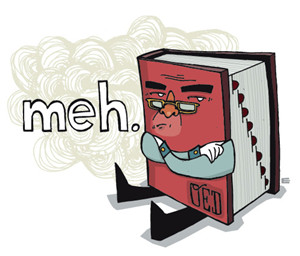
今天的《词汇大师》讨论的是如何使残疾人更方便地使用网络。
例如,导盲犬能帮助失明的人解决一些生活的基本问题,而网页一般由图片和文本两部分组成,如果添加上音频的部分,那么,盲人也就可以浏览网页了。这一改革也叫做“principled redundancy”。
但目前,这一革新的具体操作步骤还是要依据残疾人的特殊情况来具体分析。
Broadcast on "Coast to Coast": August 22, 2002
Rebroadcast on VOA News Now: August 25, 2002
AA: I'm Avi Arditti, Rosanne Skirble has the week off. This week on Wordmaster — making the Web more welcoming to the disabled.
John Slatin is director of the Institute for Technology and Learning at the University of Texas at Austin. He travels near and far, promoting ways to make the Internet more accessible to persons with disabilities.
His fellow frequent flier is Dillon. Dillon, a golden Labrador retriever, is a guide dog for the blind. John Slatin was an adult when he lost most of his sight.
Professor Slatin says the key to making a Web page more accessible is what he calls "principled redundancy."
JOHN SLATIN: "Rather than just providing the information in one form, say a paragraph or a complex image, you're providing both things. So there's both an image that illustrates a process or an idea or whatever, and a prose description of that same idea, a prose explanation — so that, for example, a blind person who can't see the image can read the prose description.
"Whereas somebody who for whatever reason can't read the prose — perhaps they have dyslexia or a brain injury that makes it difficult for them to process information in text form, or perhaps they're not familiar or very comfortable with the native language in which the explanation is written — the image can help them. And you might go even further and add a sound explanation, perhaps somebody saying the same thing or explaining the same idea, and yet a slightly different form."
AA: Since the late 1980s, John Slatin has concentrated his teaching and research on information technology. That was a switch from his earlier passion: twentieth-century American poetry.
Ironically, John Slatin says the elements that go into making a Web page accessible go against his conventional training as an English teacher.
JOHN SLATIN: "We would have talked about that as redundancy and meant something negative about that, whereas now in Web design we're looking for principled ways of allowing the use of multimedia, different media and different formats, to help different people with different needs get to the same idea."
AA: "In general, how accessible is the World Wide Web to the disabled?"
JOHN SLATIN: "The short answer is, not very. The longer answer is that it depends partly on what kind of disability you have. For people with visual impairments, in particular, it's still a very, very difficult environment to operate in, because it's a very visual medium and a lot of the people who design for it are primarily visual thinkers, and that's what they're focused on.
"And so a lot of the work to provide alternatives in text form that the assistive technology that people who are blind use, such as screen readers or talking Web browsers, doesn't have material to work with as often as it should. Or the material isn't of the quality that it needs to be yet."
AA: "How difficult is it for a programmer to add some elements that make it more accessible?"
JOHN SLATIN: "In many respects making a Web site more accessible to people with disabilities is quite simple. There are easy techniques for associating text material with images, so that, again, screen-reading software or talking Web browsers — or what are called refreshable Braille displays that some people who are blind, and some people who are both blind and deaf, use — read the text instead of coming up against a blank wall in the form of an image that they can't process. As the techniques become more familiar, I'm confident that more and more sites will be more accessible."
AA: John Slatin heads the Institute for Technology and Learning at the University of Texas at Austin. Now meet one of his assistants, "Reed."
REED: "Designers sometimes, quote, slice, quote, large, comma, complex images into several smaller images in order to speed up the time it takes for the complete page to appear on the screen, period. This technique has some important advantages, comma, but there are potential disadvantages from an accessibility standpoint, period."
AA: Reed is one of the voices on a screen-reading program called JAWS which John Slatin has on his laptop computer. As you can tell, Reed verbalizes whatever is written in a document — punctuation and all.
Now if he sounds a little fast to you, you can slow him down:
REED: "There's a difference between what users see on their screen and what screen readers, comma, talking browsers, comma, and Braille displays, quote, see, quote, when they process the HTML source code, period."
AA: If you're still not happy, with a few more clicks ...
SHELLEY: "There's a difference between what users see on their screen and what screen readers ... "
AA: You can let "Shelley" do the talking ... another example of a way to make information technology more adaptable to persons with disabilities.
And that's Wordmaster for this week. Our e-mail address is word@voanews.comand our Web site is voanews.com/wordmaster. I'm Avi Arditti.












